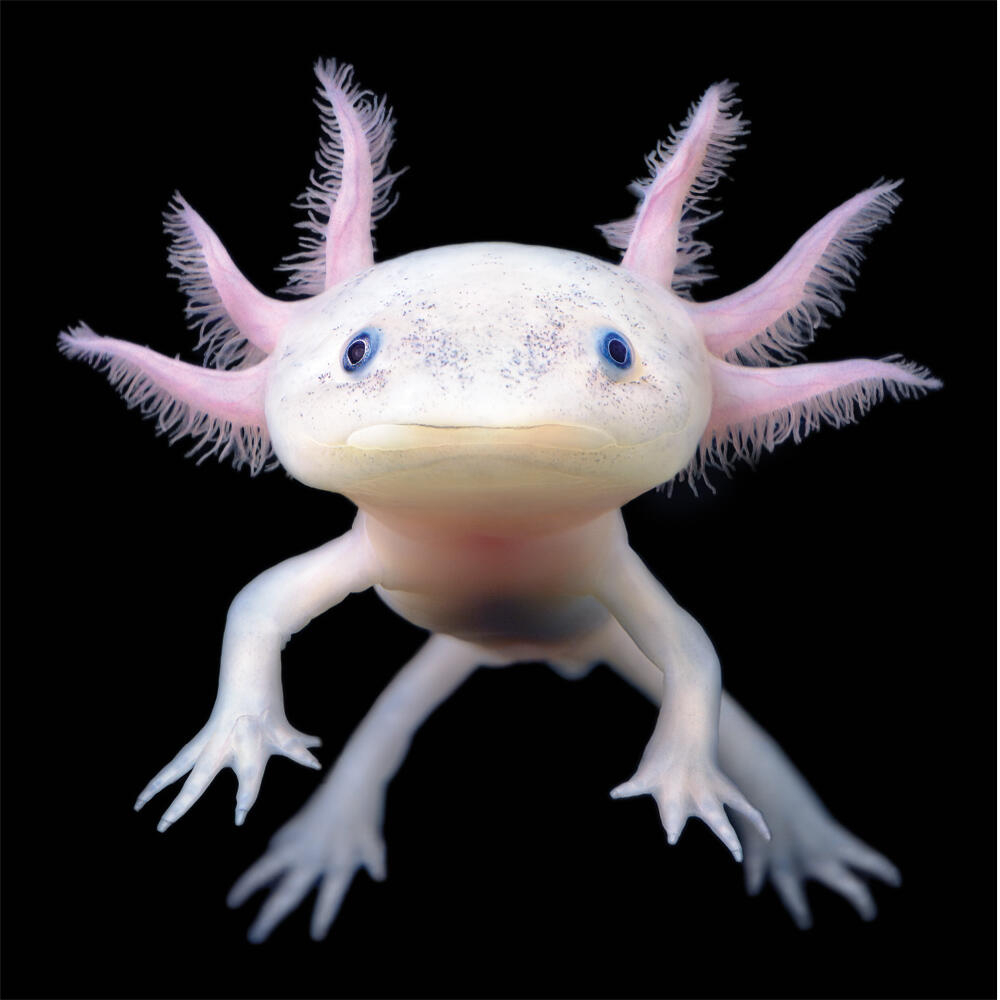Have you ever heard of an animal that can regrow its body parts, including its heart and brain? Meet the axolotl, a Mexican species of salamander, also known as the Mexican walking fish. It's not just another creature in the animal kingdom; it's a marvel of nature's regeneration capabilities.
-
Unlike other amphibians, axolotls don’t lose their gills as they grow; they remain aquatic beings for their entire lives.
-
Axolotl gills are distinctive feathery appendages that make them instantly recognizable and incredibly adorable.
-
These unique creatures have the extraordinary ability to breathe using both gills and lungs, a rarity in the animal world.
-
Found exclusively in Lake Xochimilco near Mexico City, axolotls are a testament to the beauty and biodiversity of their natural habitat.
-
Sporting various colors ranging from brown to pink to green, axolotls are known for their charming appearance and perpetual smiles.
-
Despite their small size of 20-25 centimeters, axolotls are as fascinating as larger animals, captivating the hearts of enthusiasts worldwide.
-
Axolotls have a diverse diet, feeding on worms, mollusks, small fish, and insects with their powerful suction force.
-
Interestingly, axolotls are born without teeth but rely on their strong suction power to devour prey effortlessly.
-
In a surprising twist, young axolotls may display cannibalistic behavior, although it doesn't pose a threat to their survival.
-
Sadly, axolotls face threats from predators like birds and fish, contributing to their declining population in the wild.
-
One of the axolotl's most remarkable traits is its ability to regenerate body parts, a feature that has piqued the interest of scientists worldwide.
-
Axolotls reproduce multiple times a year, with females laying up to 1,000 eggs per clutch.
-
The journey of axolotl eggs from hatching to independence is a testament to the resilience of these fascinating creatures.
-
Despite being solitary by nature, axolotls exhibit unique mating rituals, adding to their allure.
-
Masters of camouflage, axolotls can change colors to blend seamlessly with their surroundings, a survival tactic against predators and prey alike.
-
Pink, white, and albino axolotls are more common in captivity, contrasting with their wild counterparts.
-
With a massive genome size ten times larger than humans, axolotls pose a challenge for researchers studying their regenerative abilities.
-
Scientists believe axolotls hold the key to unlocking the mysteries of evolution and regeneration, offering potential breakthroughs in medical science.
-
Despite their significance, axolotls face the threat of extinction due to habitat loss, pollution, and invasive species.
-
Efforts to conserve axolotls are underway, with initiatives aimed at preserving their natural habitat and population.
-
With only a thousand axolotls remaining in the wild, urgent action is needed to protect these endangered creatures.
-
Conservation groups are working tirelessly to safeguard axolotls from extinction, offering hope for their future survival.
-
For those eager to witness the marvel of axolotls firsthand, places like Deep Sea World provide an opportunity to experience these captivating creatures up close.
